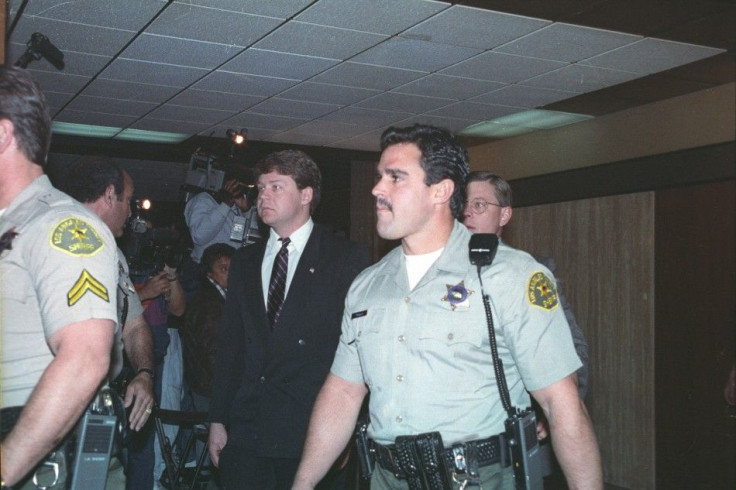Rodney King Anniversary: Deferred Police Reform Has Cost Lives
The event failed to spur radical transformation of the services and a path toward a true people’s police.

On 29 April 1992 the beating of Rodney King and subsequent acquittal of four LAPD officers Los Angeles would be seen as the most notorious incident of police brutality in modern history. It affected people’s perceptions of police officers for generations, reinforced what critics had been saying for years, and forever changed the police institution. Citizen footage of police action has brought much needed transparency, but lasting police reform is yet to be achieved.
Monday morning, March 4, 1991. I’m driving up Interstate 5 toward the San Diego Regional Training Center, pondering how my students, police supervisors and managers from throughout California, will react to the wall-to-wall coverage of the Rodney King beating the day before. Pretend we hadn’t seen it? Just plunge ahead with my lesson plan on “police personnel management”?
“Good morning,” I say, “I’m not sure how we can we talk about police recruitment, selection, training, and the like without acknowledging what happened in Los Angeles yesterday.”
Heads nod.
“So, let’s try this. Let’s go around the room. Everyone gets five minutes to tell the rest of us what you’re thinking, or feeling. Let’s start with you,” I say to a Northern California lieutenant on my right.
He jumps right in. “Look, I get that everyone’s got their knickers in a knot over this thing, but let’s all just take a deep breath and consider a few things. First off, none of us saw how this thing started. We don’t know what led up to the so-called ‘beating.’” Then he trashes the media. “Over and over and over they show that inflammatory footage. They’re trying to turn our citizens against us. What’s that about? They don’t know what King did to cause the officers to react the way they did. What I’m saying is, they weren’t there. Hell, we weren’t there. Who are we to judge?”
A San Diego police sergeant speaks with volume and authority. “I cannot believe what I’m hearing. We all know what we saw. We saw four cops kicking and slugging and clubbing a man who, no matter what he’d done before the tape started rolling, was at that moment completely defenseless. He was absolutely no threat to the officers. Call it what you want, what I saw was cowardice and criminality.”
Those were my thoughts exactly. That night I would tell a TV reporter, “It was the most brutal and cowardly act I’d seen in all my years as a cop.” The reporter asked, “What should the other cops have done, the bystanders?” That’s easy. “They should have waded in, pulled their brother officers off that man, and hauled them to jail.”
Did the Rodney King beating forever change the institution? More narrowly, did George Holliday’s camcorder video of the incident portend broader use of cameras, leading to greater surveillance and accountability of police actions?
Hardly.
Holliday’s quick thinking and the video it yielded certainly added fuel to a nascent movement to “film” police officers as they go about their everyday work. There was little or no talk in those days of equipping cops or their cars with cameras; that conversation would not begin, in earnest, until many years later. And it caused chiefs and sheriffs throughout the land to give voice to a critical message: Any officer who engages in the kind of behavior we saw in Los Angeles will be fired, no ifs, ands, or buts. Further, prompted by the iconic imagery of the violence and the public outcry that ensued, it did give rise to honest (albeit short-lived) efforts to improve police officer training, supervision, and discipline, as well as relations with the community.
But the one “improvement” never undertaken, much less attempted, was a structural overhaul of the institution itself, the kind of fundamental, indeed radical transformation of the system that would, ultimately, transform its culture. Had that happened, or at a minimum, had the work begun, we would arguably be on a path toward a true people’s police: police and citizens working in authentic partnership with one another, participating in all aspects of police operations -- from policymaking to program development, officer selection to academy training, investigation and oversight of alleged police misconduct to official reviews of use-of-force, including lethal force. Picture citizens, for that matter, partnering with their police to co-plan and co-police political demonstrations. A merger of Black Lives Matter and Blues Lives Matter?
Had the video of the Rodney King incident spurred this kind of profound, and necessary, reform, I submit that the recent cold-blooded murders of Laquan McDonald in Chicago and Walter Scott in North Charleston, SC likely would have been prevented, and that the families of Tamir Rice, Michael Brown, Philando Castile, and so many other black boys and men would have been spared the life-shattering grief caused by their violent and needless deaths at the hands of police officers.
Good cops who are stable, mature, confident, capable of controlling their emotions and de-escalating tension, and there are many, deserve better. And so do our citizens. True change will happen when we come to recognize that the police in America belong to the people, not the other way around.
One should not underestimate the value of recording police actions. Whether a cell phone camera in the hands of a citizen-witness or a dash-cam recorder in a squad car or body-worn camera attached to the shirt of a police officer, such devices hold great promise for capturing police actions. But truly lasting change requires overarching reform, so that the camera’s eye will eventually capture our imagination and allow us reward good police work, in addition to confronting any misconduct.
Norm Stamper is the former chief of police of Seattle and the author of TO PROTECT AND SERVE: How to Fix America’s Police, published by Nation Books.
© Copyright IBTimes 2024. All rights reserved.





















